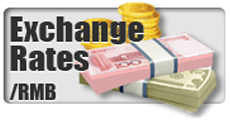Russian Rare Earth deposits may be higher than estimated
2010-12-10 09:28:46 【Print】
Russia’s sole rare-earth exporter has revised mineral deposits in the country saying reserves are higher than estimated last year.
Giving out the revised numbers, Pavel Detkov – Managing Director of Polyfer Handels said in Tokyo on Tuesday that Russia has about 27.9 million metric tons of reserves under the A+B+C1 category. Russian company Solikamsk Magnesium Works processes rare-earth minerals and Polyfer is their trading agent.
The new estimate puts Russian reserve ahead of China, which is supposed to have 27 million metric tons of reserve, as per estimates provided by JOGMEC – the Japanese Trade Ministry agency. Japanese trade ministry had put the reserves of Russia and other CIS countries reserve at about 19 million metric tons. Japan remains the world’s biggest importer of rare-earths and the Russian system does not correspond with other nations estimates. However, the A+B+C1 grade indicates fully explored reserves.
In an interview Detkov said: “We need to re-evaluate the Russian sources of rare earths. Some well-known sources look very reasonable now.”
According to a presentation made by Molycorp on Tuesday, prices of some rare-earths have shot by 1000 percent since the dominant supplier China started controlling exports. China alone produces 90 percent of the world’s rare-earth minerals, which is widely used to make electronic goods and batteries for hybrid cars. Higher profits and a need to secure supply have boosted demand from alternate sources.
Sojitz Corporation of Japan signed an agreement with Lynas Corporation of Australia to supply Japan with a quarter of its annual imports of 32,000 tons. Nikkei English news reported on Tuesday that Sumitomo may buy shares of Molycorp of USA. Australian miner Arafura Resources declared in October that it is planning to raise 1 billion AUD (Australian Dollars) in the next 12 months to commission its first rare-earth project.
Delegations from Mongolia and Canada have already visited Japan in the last two weeks to restore supply after China cut supplies following a diplomatic row with Japan. Detkov said buyers may be attracted towards Russia as well.
Last year Russia exported 3000 tons of rare-earth carbonates to Kazakhstan and Estonia for processing and imported 1000 tons of minerals, Detkov said.
Russia has 17 proven rare-earth deposits including Loparite and Apatite ores. However, the country’s production is dominated by Niobium Oxide, Titanium Sponge and Tantalum Oxide. The country’s sole rare-earth miner – Lovozersky GOK, operates its mines in the Murmansk region.
Giving out the revised numbers, Pavel Detkov – Managing Director of Polyfer Handels said in Tokyo on Tuesday that Russia has about 27.9 million metric tons of reserves under the A+B+C1 category. Russian company Solikamsk Magnesium Works processes rare-earth minerals and Polyfer is their trading agent.
The new estimate puts Russian reserve ahead of China, which is supposed to have 27 million metric tons of reserve, as per estimates provided by JOGMEC – the Japanese Trade Ministry agency. Japanese trade ministry had put the reserves of Russia and other CIS countries reserve at about 19 million metric tons. Japan remains the world’s biggest importer of rare-earths and the Russian system does not correspond with other nations estimates. However, the A+B+C1 grade indicates fully explored reserves.
In an interview Detkov said: “We need to re-evaluate the Russian sources of rare earths. Some well-known sources look very reasonable now.”
According to a presentation made by Molycorp on Tuesday, prices of some rare-earths have shot by 1000 percent since the dominant supplier China started controlling exports. China alone produces 90 percent of the world’s rare-earth minerals, which is widely used to make electronic goods and batteries for hybrid cars. Higher profits and a need to secure supply have boosted demand from alternate sources.
Sojitz Corporation of Japan signed an agreement with Lynas Corporation of Australia to supply Japan with a quarter of its annual imports of 32,000 tons. Nikkei English news reported on Tuesday that Sumitomo may buy shares of Molycorp of USA. Australian miner Arafura Resources declared in October that it is planning to raise 1 billion AUD (Australian Dollars) in the next 12 months to commission its first rare-earth project.
Delegations from Mongolia and Canada have already visited Japan in the last two weeks to restore supply after China cut supplies following a diplomatic row with Japan. Detkov said buyers may be attracted towards Russia as well.
Last year Russia exported 3000 tons of rare-earth carbonates to Kazakhstan and Estonia for processing and imported 1000 tons of minerals, Detkov said.
Russia has 17 proven rare-earth deposits including Loparite and Apatite ores. However, the country’s production is dominated by Niobium Oxide, Titanium Sponge and Tantalum Oxide. The country’s sole rare-earth miner – Lovozersky GOK, operates its mines in the Murmansk region.




